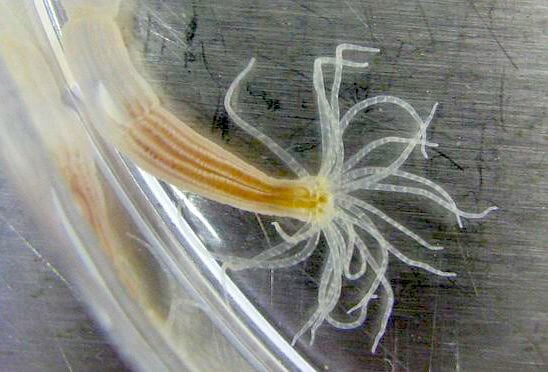Anemones are interesting little creatures.
Scientifically known as the cnidarian Nematostella vectensis, these sea creatures have no hearts or muscles. However, these unlikely creatures may provide the answer to generating heart cells for humans.

The sea anemone is a natural marvel, with its uncanny ability to regenerate almost indefinitely. When cut into pieces, each piece of the sea anemone will grow and evolve, becoming an independent creature all on its own in a matter of minutes. Daniel Rokhsar at the University of Berkeley studied these little phenomenons and was continuously surprised by their ability to regenerate.
“As far as we know these are immortal animals,” Rokhsar said. “You can cut them in half, and they’ll create two new anemones.”
It is this trait that provides insight into generating heart cells for humans. Sea anemones, although without an actual heart, do contain “heart genes” that researchers have found to be identical to human heart genes. These genes help to form heart cells in humans, and understanding how the sea anemone can regenerate and repopulate might help researchers understand how to do the same with the human heart.
“Our study shows that if we learn more about the logic of how genes that give rise to heart cells talk to each other, muscle regeneration in humans might be possible,” said Mark Martindale. Martindale is a Biology professor at the University of Florida and Director of the Whitney Lab for Marine Bioscience in St. Augustine.
Related: Researchers Get Closer to First Lab-Grown Blood Stem Cells
In sea anemones, the genes never perform functions other than their original purpose. This is defined as a “lockdown” of sorts, where the genes stay “on” permanently and are clearly defined as heart genes, brain genes, etc.
“This ensures that heart cells always stay heart cells and cannot become any other type of cell,” said Martindale.
Martindale also suggests that these cells preceded the rest of the muscular tissue in the human body, and come from a gut tissue that follows a contractile pattern, similar to the human digestive system, or even a beating heart. These findings support the idea that the very first animal cells could have been similar to that of the heart. If researchers can uncover how these cells formed — and continue to form, and re-form — in sea anemones, this could unlock the key to generating heart or other muscle tissue using genes from the human body itself.
Related: Scientists Grow Beating Heart Cells on Spinach Leaves
Marissa is a health and fitness writer from the Tampa Bay area. In addition to researching the latest trending topics, she enjoys instructing kickboxing classes and posting incessantly to her Instagram account.


![How To: ‘Fix’ Crepey Skin [Watch]](https://cdn.vitalupdates.com/wp-content/uploads/2017/05/bhmdad.png)












